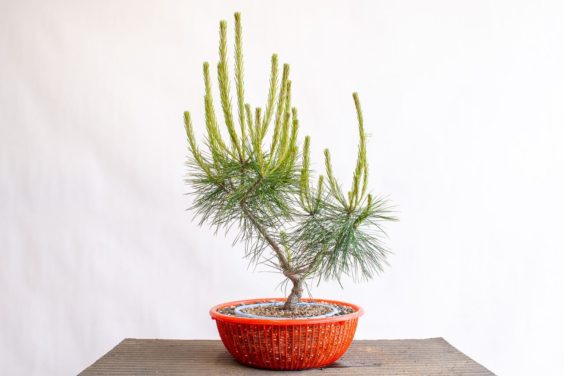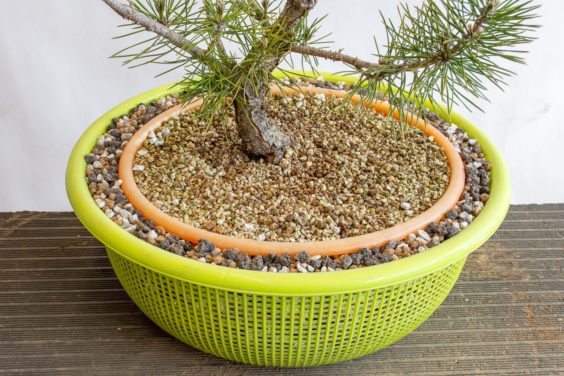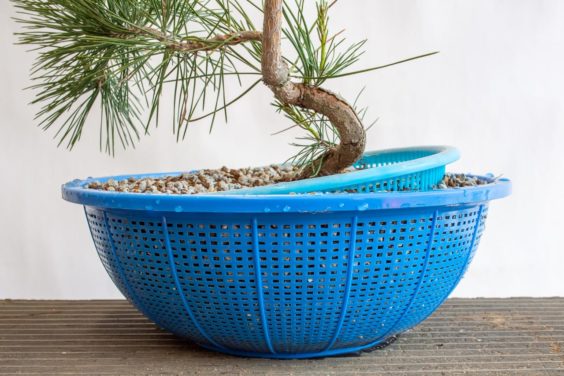For young trees growing in colanders, a repot isn’t always necessary when the roots run out of space. Here’s an overview of an alternative approach in two photos.
Red pine in 6″ colander
After nesting the colander within a larger colander
The theory behind this approach is that large roots are less likely to develop outside the inner colander. This focuses growth on the roots closest to the trunk – the roots that help the tree develop taper near the surface of the soil.
Like many techniques in bonsai, the double colander approach has its pros and cons. Apart from whether or not it improves the roots – I have yet to measure the effect – it’s worth considering as a fast and simple alternative to traditional repotting. And if a tree starts drying out too quickly in summer, it’s easy to nest it in a larger container without waiting until the next repotting season.
Sometimes I use the same size soil in both colanders and other times I use larger soil in the outer container. Am not sure it makes a big difference either way. The main thing is to let roots escape the inner container and begin growing in the outer one.
Nested colanders with larger soil in the outer container
The approach also facilitates subtle changes in the planting angle.
Inner colander set at an angle
As for the cons, the main one is that repotting can be a mess. Several years back, I mentioned my hesitation about the approach after finding the repotting process involved hacking through a jumble of roots and plastic scraps. I was happy with the roots in the inner container, but didn’t enjoy removing the plastic scraps from the used soil.
The post An alternative approach to repotting trees in development appeared first on Bonsai Tonight.




